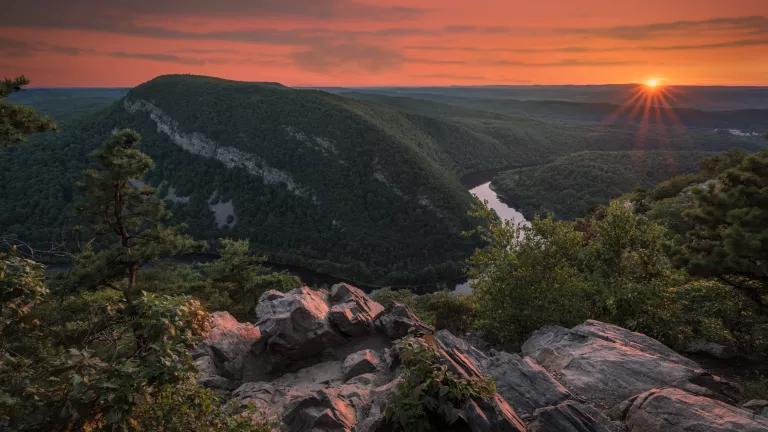For decades, uranium has been mined in ways that damage our waters and land, put our communities at risk, and cost taxpayers hundreds of millions of dollars in clean-up costs.
Now, for the first time in years, the environmental community has the chance to make its case before one of the crucial federal regulators on how we can do better. The stakes are high – especially for Western communities and their groundwater.
Last fall, NRDC and our Wyoming colleagues at the Powder River Basin Resources Council (PRBRC) challenged the proposed licensing of a planned uranium mine in Crook County, Wyoming. The mine would use a process known as “in-situ leach” mining. This method combines the mining and milling of uranium into a single step, by leaching uranium and other heavy metals off the surface of uranium-bearing rock in place.
Instead of actually digging up the uranium ore, in other words, this process extracts uranium by injecting water mixed with base solution into the rock formation in an underground aquifer, to dissolve the uranium from its host rock. The uranium-laden water flows into underground production wells and, from there, is pumped to the surface and piped to a centralized facility, which extracts the uranium.
We have written about the regulatory system and its numerous inadequacies. If you are really interested, I encourage you to read it. In brief, the Nuclear Regulatory Commission is the main licensing body for in-situ leach uranium mining. We are challenging that body’s decision to issue a license for the Wyoming mine.
Why?
There are four basic reasons.
- First, as it’s currently done, in-situ leach uranium mining damages western water and lands.
- Second, the regulatory system that ostensibly governs how the mining is done is inadequate, at best, and compounds the harms by failing to offer any meaningful mitigation strategies or strict requirements that force the uranium industry to fully restore the affected resources.
- Third, the permit application for the proposed mine suffered from the same deficiencies that led to our findings in the paper linked above.
- And fourth, uranium mining has a dreadful history of environmental and social harms and, quite simply, we owe it to the American West to not repeat them.
There are some 4,000 abandoned uranium mines scattered across the landscape of the West. Decades after the closure of operations, a significant number remain to be cleaned up.
A full accounting of the costs has only just started after decades of neglect. The costs of what cleanup has been done—a price-tag that is certainly in the hundreds of millions of dollars—has been borne in large part by taxpayers rather than the mining companies and downstream customers.
Looking forward – and, fundamentally, a key reason we brought this case – if we don’t reform the regulatory system we risk creating a whole new set of expensive, damaging problems.
Federal and state agencies must update the existing regulatory structure to reflect the best available scientific data and analysis of the environmental impact and long-term public health risks.
The U.S. Environmental Protection Agency has started that process – and more on that in another blog – but much needs to be done.
On May 11, NRDC received a decision from the five Commissioners of the Nuclear Regulatory Commission (NRC) that our challenge survived an appeal by industry and the NRC Staff on procedural grounds.
That means we get to proceed with a battle of scientific experts and law on this matter, with a hearing in Wyoming set before the NRC’s Atomic Safety & Licensing Board in 2014.
Our goal is to ensure sound environmental requirements for this particular mine in Wyoming and, beyond that, create the template for reforming and improving this inadequate regulatory scheme everywhere.



